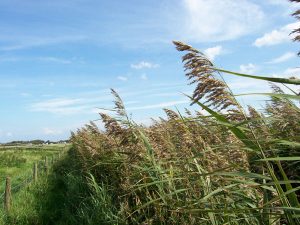Following is a construction summary outlining the work required for building a vertical flow reed bed system:
Design the system and procure planning permission.
Remove topsoil from the site of the reed bed area.
Excavate the subsoil if required, to the specified design for the site. This involves digging out the main basin or cell of the reed bed and building the banks around the system or constructing the concrete walls.
Install the outlet flow control unit as per the designs and any sewer manholes necessary for sampling or inspection.
Plaster the walls with plasticiser to provide a seal, unless a plastic liner is needed, in which case this should be installed.
Fill with gravel layers to the specified depths, finishing each layer level.
Install septic tank(s) and pump sump.
Install the next stage of treatment (VF reed beds are usually the first stage in a multi-stage treatment system). This should be completed before the reed bed is used for sewage treatment.
Install the pumped inlet distribution system as per the designs.
Plant the system with the species listed in the designs and seed the bare soil around the perimeter of the system.
Until the system is in use, flood to within 50mm of the surface level by fitting anupturned elbow on the outlet pipe draining the AJ risers, if a liner is used. Other-wise keep watered by hand in the first summer.
Connect the pump when plants are in place. Only connect after planting is complete.
Remove the outlet flow control riser pipe to base level once the system is in use. This may be reinstalled to flood the system again if leaving the system unused for >1 week during the first growing season (e.g. summer holidays), but remove again upon returning home to allow full drainage of the system.
Follow-up maintenance of the septic tank and pump sump is critical to prevent solids carry-over to the reed bed.
See the Permaculture Guide to Reed Beds for plans, materials, checklist and lots more info.

